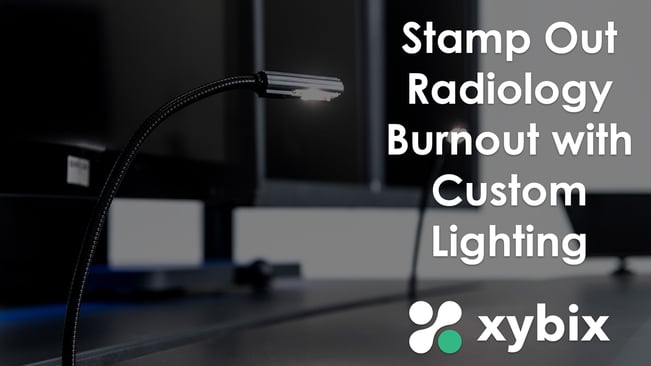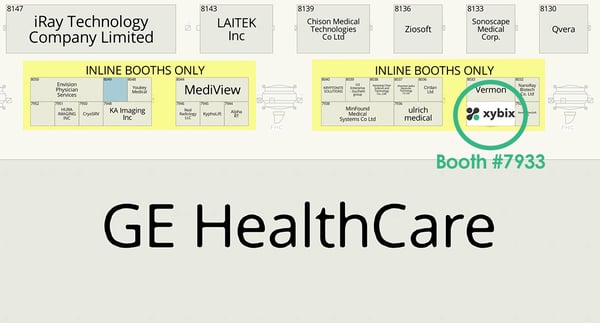
As I write this from my bright and sunny office, I need to remind myself that radiologists do not have the luxury of sunshine and light at work while reading at their PACS workstations. This is a problem because the dim rooms they work in contribute significantly to burnout levels in radiology of more than 50%. In addition, working for long periods in low levels of ambient light can disrupt circadian rhythms and lead to depression—which doesn’t really help on the burnout front.
Fortunately, research supports three ways to solve the lighting issues that contribute to burnout—ambient lighting, task lighting, and the ability to customize lighting for each person and need.
Ease Eyestrain with Ambient Lighting
Ambient lighting—whether in the room or behind the monitors—can create the conditions for optimized visual acuity while minimizing eyestrain. The key is for the ambient lighting to match the intensity of the monitor lighting so that the eyes aren’t constantly readjusting from light to dark conditions. The American College of Radiology suggests illumination of 25–50 lux, dim lighting that is similar to a bedroom lamp.
Creating a dim reading room is easy—but this doesn’t accommodate each radiologist’s lighting preferences. To do this requires desk-based ambient lighting that each user can quickly personalize at the beginning of the shift and anytime throughout the day. Professional ergonomic desks should offer one-touch customizable ambient lighting. Given that radiologists cite lack of control as a factor in burnout, providing easy ways to customize the imaging desk is sure to make a difference.
Tackle Paperwork with Task Lighting
Speaking of control, radiologists need control over the lights that shine on everything from their paperwork to their coffee cups. Task lights incorporated into an ergonomic workstation fit the bill, especially when users can personalize the intensity and direction of the light. Any seamless feature that makes it easier to work while providing control is a morale builder.
As one study shows, “when people have control over the lighting in their work spaces, their moods are more upbeat, they are more committed to their employers and they have overall improved well-being.”
Choose Light Colors to Complement Circadian Rhythms
Long shifts, dim rooms and lack of sunlight can also impact radiologists’ circadian rhythms (the changes to body, mind, and behavior that follow a 24-hour cycle) and lead to burnout. These impacts affect sleep and eating patterns, can even cause depression and season affective disorder (SAD). Fortunately, radiologists can blunt the impacts to their circadian rhythms with simple changes to the color and intensity of lighting.
Professional ergonomic radiology desks should include built-in, customizable colored LED lighting. For example, radiologists should be able to select any color from orange to boost their mood or green to instil calm. The sense of control and the wellness benefits of working in personalized lighting both raise morale.
Make Adjustments a Snap—or They Won’t Happen
It’s human nature to get to work, sit down, and get to it—even if means paying the price later in eyestrain, neck/back pain, carpal tunnel and more. I’ve never seen a radiologist spend the 3 to 5 minutes it would take to individually adjust desk height, lighting, heating and cooling, and keyboard placement. This is precisely why it is important to have some mechanism to adjust all ergonomic parameters are once through an app or other mechanism. This approach would enable a radiologist to gain ultimate control over his or her workspace in 10 to 15 seconds. Simply save all imaging desk settings as “scenes” for use at different times of day or on different shifts. To activate, a quick touch makes all height adjustments, and a second touch completes the customization with lighting and climate controls.
Giving the “eyes of medicine” control over their lighting helps prevent burnout—which benefits all of us!
We would love to show you our desks in person! If you're attending RSNA 2023, stop by our booth. We're Booth #7933 on Level 3 of the North Hall (See Map Below):



